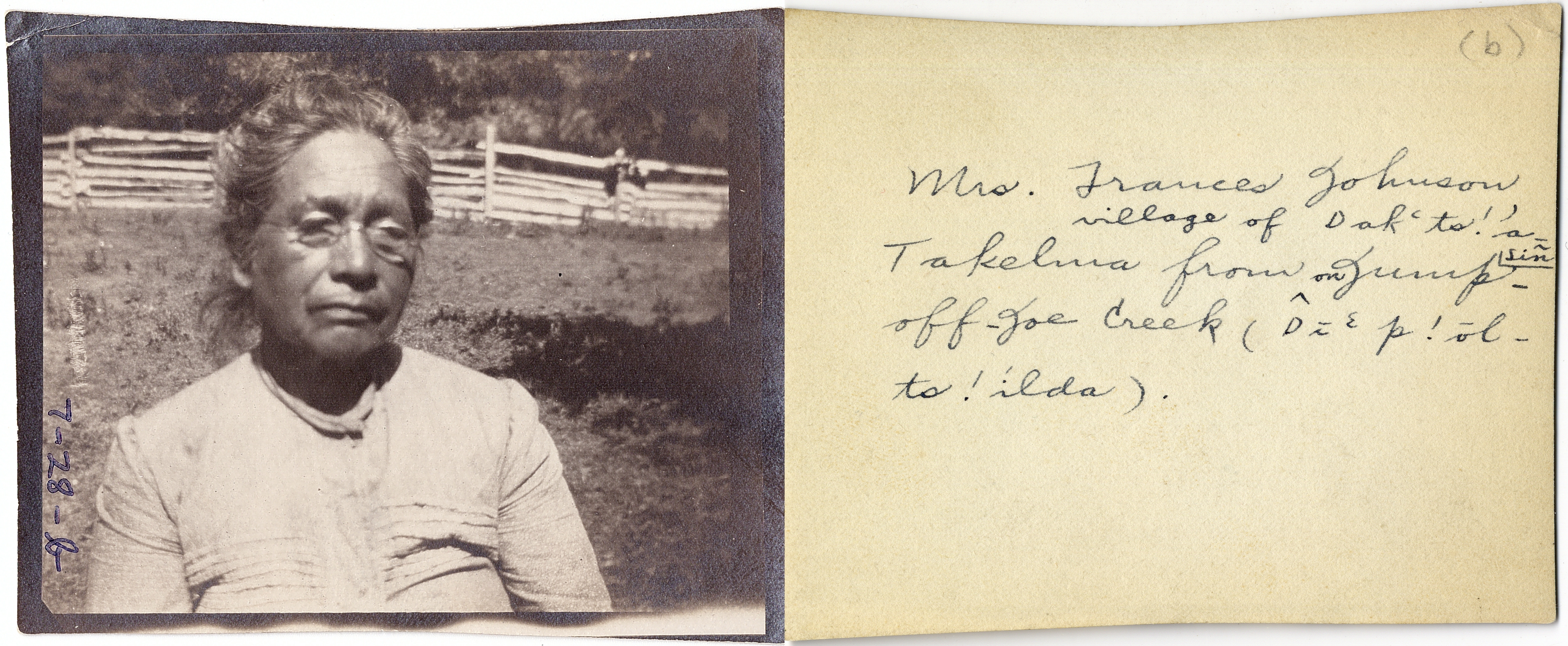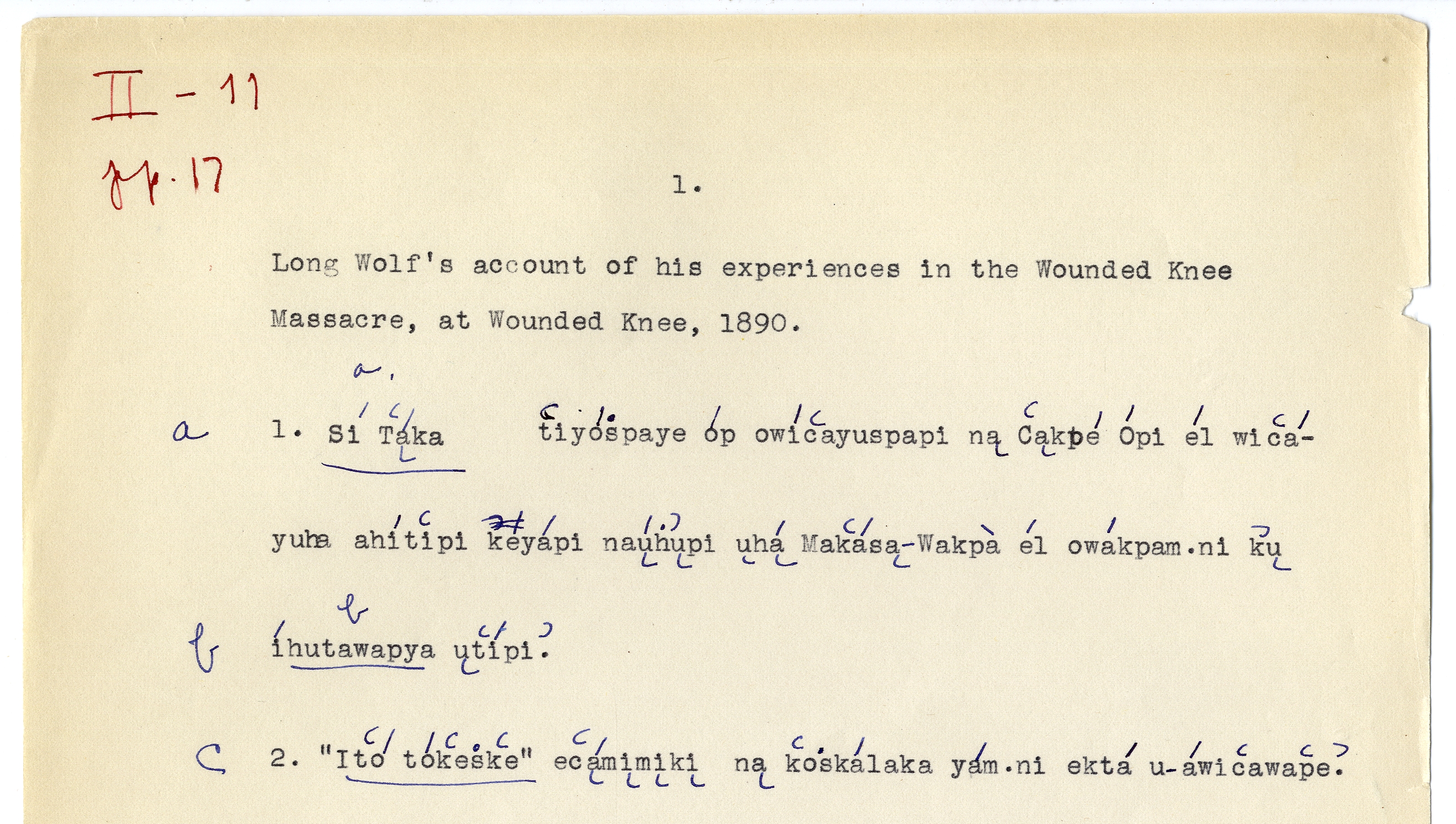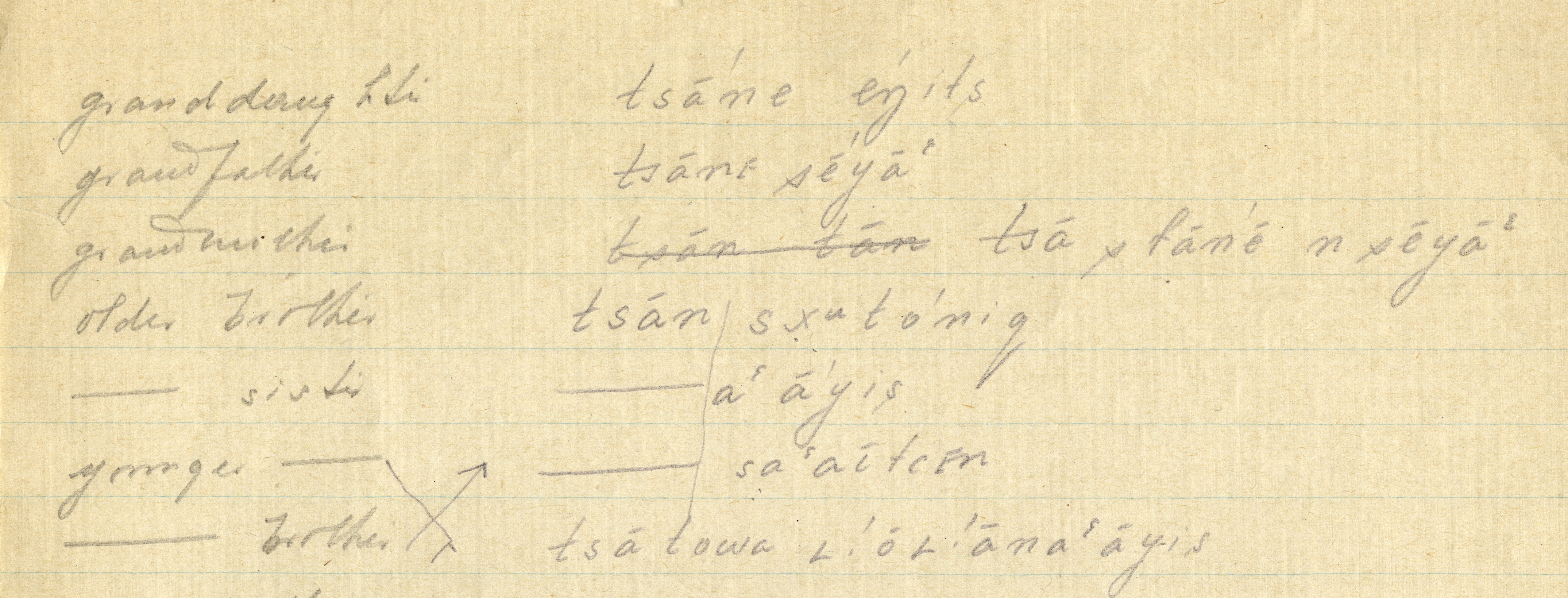Finding Mrs. Mahone and other Indigenous experts in the archives
The many manuscripts and notebooks at the APS Library produced by anthropologists studying Indigenous peoples are fundamentally based upon the knowledge and expertise of the individual Indigenous people who communicated that knowledge. But in what they published, many anthropologists of the late 19th to early 20th century in particular obscured or omitted information about these individual people, and avoided stories that reflected their lived experiences. The Karuk scholar Julian Lang put it well when writing about the publications of Alfred Kroeber, one of the anthropologists of that era, by simply pointing out that he “never introduced us to the living people.”
Archival repositories have also relegated or left out information about the particular Indigenous people who are sources for a range of reasons, from the mundane to the racist. Among these are the traditional representations of Indigenous peoples as a subject matter rather than as intellectual authorities and as the archives’ constituencies. Another reason is the habit of only crediting authorship to the recorders of Indigenous knowledge and not to those who knew it, communicated it, and looked after it.

However, information about these particular, individual people is often in archival materials. How frequently? This varies quite a bit, depending on whether the recorder had a practice of writing down speakers’ names or not. Some never did. Some always did. For those who did, often all they put down was the name. A person’s name, however, can lead to a bigger story, or to the hint of one that we, as archivists who are not from that community, just don’t know because we are not connected to it.
Sometimes the names one finds in manuscripts are people who are well known, especially to the community they are from, and whose connection to an archival document tells us something new about them. I encountered such as case when looking at a folder simply titled “Chippewa field notes, 1938.” Right at the top of the document was the name “Thomas St. Germaine.”

This is almost certainly Ted St. Germaine, a distinguished member of the Ojibwe community of Lac du Flambeau in Wisconsin, who attended the Carlisle Indian School, obtained a law degree at Yale in 1913, was recruited by Jim Thorpe to play in the NFL’s all-Native Oorang Indians team in 1922, became a tribal judge and the first Native American admitted to the bar in Wisconsin, and was a spokesman for Lac du Flambeau in congressional hearings in 1934 arguing for respect of treaty rights.
More well-known Indigenous experts who created vast amounts of manuscripts in the APS archival collections, such as Ella Deloria and George Hunt, have had more written about them, but because of the way archival collections are structured, their work and information about their life is confined deep within collection guides and not given the prominence it deserves. Not surprisingly, the stories that Indigenous experts like them directly recorded frequently consist of stories of a particular person’s actual experiences. One such example is the story written down by Ella Deloria in the 1930s, given by a man named Lone Wolf who recounted his first-hand experience of the Wounded Knee Massacre in 1890.

Sometimes the names in the manuscripts only hint at a bigger story that we do not know, but may be known well by the person’s descendants and community. One example of this kind begins with Franz Boas, but turns out not to be about him at all. I was looking at a folder of manuscripts that were attributed to him and labelled "Clallam notes, 1917." The first thing I noticed is that there's no way it could be by Boas. The handwriting looks nothing at all like his, which is tinier and much more messy. On top of that, the manuscript was recorded in January 1917 in Neah Bay, near the northwest tip of Washington state. Boas was nowhere near there at that particular time.
The story of why it was wrongly credited to Boas and how to figure out who actually wrote it down is a story for another day. What was more interesting was the name written on the 5th page of document: "Mrs. Mahone." She was the Klallam language (nəxʷsƛ̕ay̕əmúcən) speaker who helped this linguist with her expertise about her language. She was the ultimate basis of the information in the document. It’s important that we acknowledge her as creator of this material. But shouldn’t we try to give her full name and learn more about who she was so that was?

I wasn’t optimistic about finding more information. The manuscript itself doesn’t give any good clues about her directly, as it’s mainly a long list of core language terms for important areas such as plants and animals, kin and relationships, and so on. It also shows something I’ve noticed about many early and mid-20th century fieldwork materials: when the researchers, almost all of whom were white men, sought the expertise of Indigenous women for whatever they were studying, they were less likely to mention the woman by name than when they worked with men. And the most aggravating feature of all is that when they did give a woman’s name, they often gave it just as “Mrs.” + her husband’s name (“Mrs. Richard Smith.”) They couldn’t manage to do the simplest of things: write down her first name.
But I backtracked a few years to the 1910 Federal Census for Neah Bay to see if there were any people named Mahone. I found just four people with this name (near the end on page 75B), but it was a family of four, including a woman named Rosa Mahone. It tells us she was age 30 and married with two young children, and that she was Klallam. This tells us very little about her, but it’s now included with the full catalog description of the item, along with a full acknowledgment of her as one of the creators of the material. Hopefully, this clue in the cataloging can be a jumping-off point for future insights into her story.

As archivists at CNAIR, a key part of our ongoing work is to go through manuscripts that have been cataloged decades earlier to look for names of specific Indigenous individuals that are written down but are not noted in the cataloging or not credited as the sources of the knowledge given. We have seen over and over again that the presence of these names is one of the main ways that Indigenous community members and relatives find these archival resources. The importance of this cannot be overstated, as knowledgeable people from many communities have said that much of the knowledge conveyed by earlier generations through these resources was given specifically so that it would reach future generations. Cataloging these names can sound like a very boring, cold, or mechanical task, but I would suggest that we can also see it as a way for an archive to get out of the way a bit and allow the knowledge within these archival materials to carry out its intentions and reach the people it needs.


